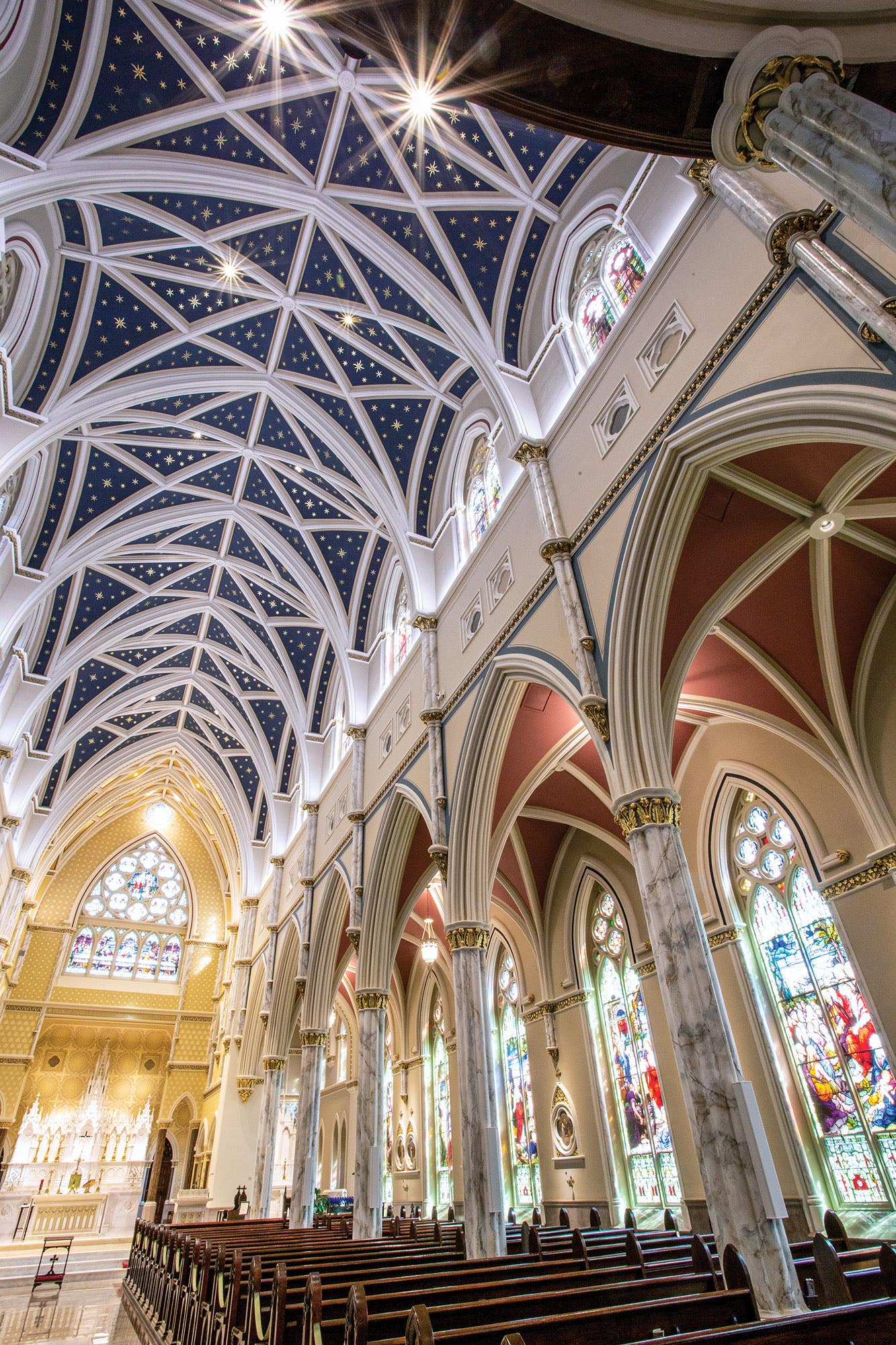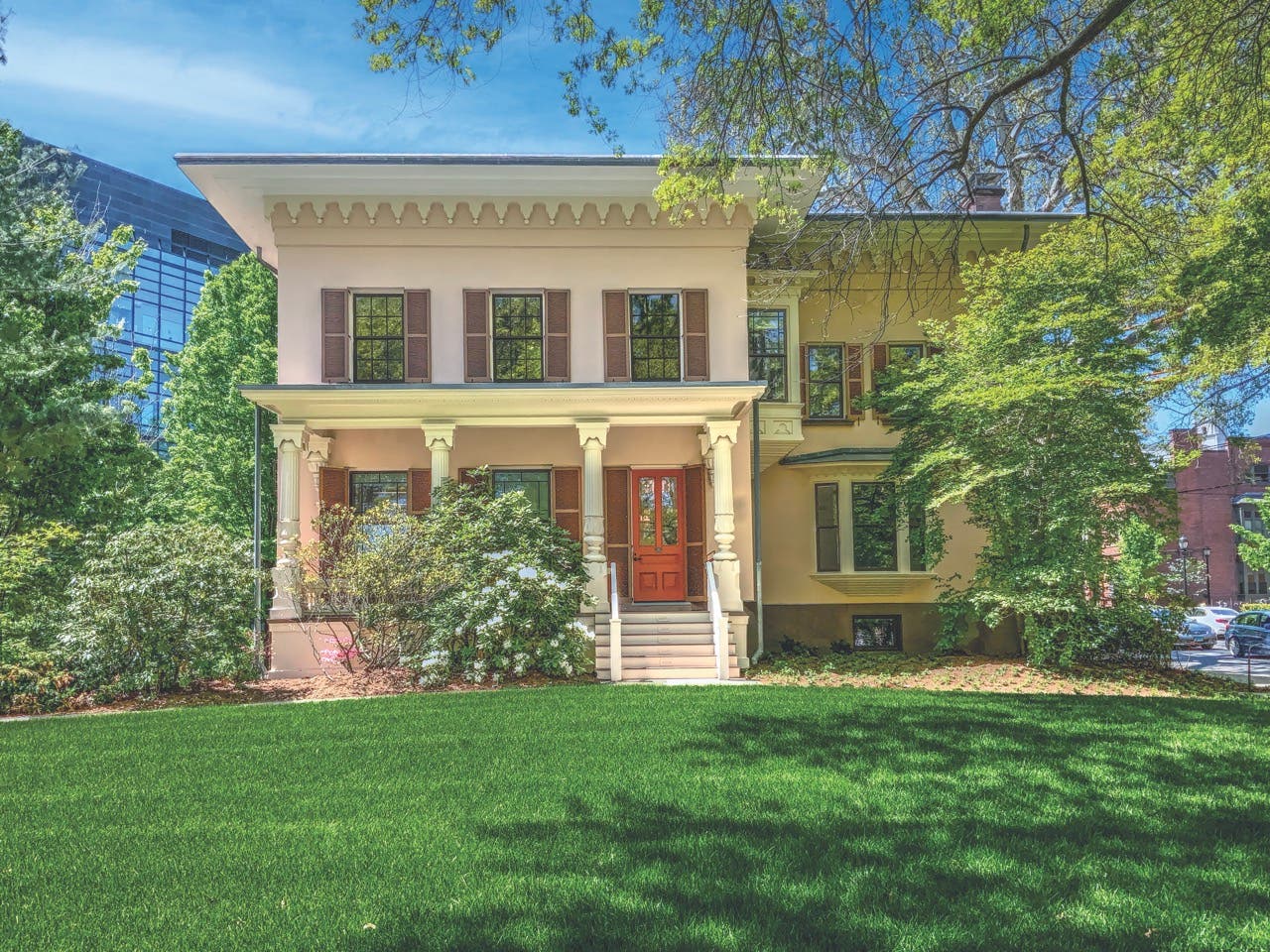
Product Reports
Preserving Decorative Finishes
We’ve all looked up to appreciate the detail and the grandeur. Whether it’s a church cathedral, theater lobby, or state house dome, the artistry overhead and around can both mesmerize and astound you. But eventually, like all good things, these cherished spaces require upkeep from the marching of time, and that’s where experts in decorative finishes come into play.
Luckily for those who maintain buildings of architectural, historic, and religious significance—and for all of us who appreciate them—there are modern-day artisans capable of conserving and even reviving a historic structure’s painterly features. Here are two renowned firms that excel in the invaluable niche of architectural arts.
CONRAD SCHMITT STUDIOS
Headquartered just outside New Berlin, Wisconsin, Conrad Schmitt Studios is a custom decoration and restoration company. Impressively, its talented teams of artisans have worked in all 50 states. “We’ve traveled coast to coast, even to Hawaii and Alaska,” notes Heidi Gruenke Emery, who co-owns the firm with her brother, Gunar Gruenke.
The company itself is historic, dating back to 1889, when Conrad Schmitt, the son of Bavarian immigrants, established the firm in Milwaukee. It remained in the Schmitt family until 1953, when longtime employee Bernard Gruenke, Heidi and Gunar’s grandfather, purchased it from the Schmitt estate in 1952. “We are now on our family’s fourth generation, with my son and my brother’s daughters working here too,” reveals Emery.
Services include decorative painting, mosaics, murals, ornamental plaster, stained glass, and statuary. From the early stages, the studio provides invaluable guidance, assessing a project’s condition, establishing budgets, and even brainstorming fundraising plans. Its extensive portfolio includes the Waldorf Astoria in New York City, Wang Theatre in Boston, Basilica of the Sacred Heart at the University of Notre Dame, and Minnesota State Capitol building, among dozens and dozens of others.
“We use historic photos and can also take core samples to investigate the different paint layers,” says Emery of the firm’s conservation capabilities. “We use different solvents to get down to an original paint layer if need be. We just preserved the Sioux Falls State Theatre and discovered its murals’ true colors and an original stencil pattern by removing a light fixture. There’s a lot of research that precedes the art.”
For optimum authenticity, Conrad Schmitt Studios uses a barrier varnish after the original artwork is cleaned, allowing a future owner to remove their work if desired. “Ultimately our restoration goal is for a painting to be enjoyed as the original artist intended,” Emery contends.
A favorite aspect of her job is the friends made along the way. “Nearly 90 percent of our projects are repeat clients or referrals. We’ve regilded the dome at the University of Notre Dame numerous times, for example,” she relates. “It’s a little sad when a project finishes, but we know there’s always more to come.”
JOHN CANNING & CO.
Curiosity, creativity, and collaboration all collide at John Canning & Co., based in Cheshire, Connecticut. The 45-year-old company specializes in historic decoration and the architectural arts. The company helped preserve architectural gems throughout North America, including over 20 state capitols, beloved museums, libraries, theatres, and university buildings as well as dozens of sacred buildings. Iconic structures in its portfolio include the Boston Public Library, Union Station in D.C., the Mark Twain House & Museum, Radio City Music Hall, and Grand Central Terminal, to name just a few.
Company principals John Canning and David Riccio are known for confidently tackling difficult design and restoration problems with their studio and onsite teams. Their work has gained the firm a long and impressive list of awards, including the prestigious Arthur Ross Award, Bulfinch Awards, and Stanford White Awards from the Institute of Classical Architecture & Art (ICAA).
“At the end of the day, we’re problem solvers,” says Riccio. “Clients turn to us when they experience technical problems they’ve never encountered before. What is this coating? What is the composition of this paint? What was the original paint scheme? How do we restore it? That’s where we come in,” adds Riccio.
“We are very knowledgeable about all of the traditional materials and methods that have been used by artists and craftsmen for centuries,” John Canning explains. For example, the firm was tasked with restoring the c. 1772 Maryland State House in Annapolis. “We made our own distemper paints, applied a lime wash to the ceiling, and applied old-fashioned linseed oil paints to the woodwork,” says Canning. “We even sourced brushes similar to those used in the original construction.” The traditional three-coat lime plaster system was also replicated and required to slake for over a year. The scratch and brown plaster coats were mixed in the traditional fashion with hog hair for reinforcement and the finish coat was of a neat lime plaster. The ornamental plaster throughout—replete with egg and dart, dentals and swags—were cast of gypsum plaster.
John Canning & Co. is often called in to save ceilings. Deteriorating plaster on the verge of collapse can be reinforced by mechanical fastening methods and acrylic consolidation systems. Consolidation reconstitutes and strengthens the plaster, restoring the integrity of the building, ensuring safety, and preserving the decoration within.
Canning, a time-served tradesman, is a leading authority on historic decorative painting techniques, materials, and color palettes. During the design phase, Canning prefers watercolor renderings to computer generated. “I don’t just pick colors—I actually mix them on a palette,” he contends. “I find that delivering traditional renderings opens up a client’s imagination to what we are trying to do.”
In addition to preservation, the company also develops new interiors with authentic period detailing. Two recent examples of custom interiors are a chinoiserie room depicting allegorical scenes of the four seasons and an entertaining space inspired by Pompeian wall paintings at a church rectory. In both cases, the work was executed on canvas in the company studio.
Owen Jones’s first principle in his Grammar of Ornament has been the firm’s guiding verse from the start: “The Decorative Arts arise from, and should properly be attendant upon, Architecture.” Coupled with modern-day advancements, the Canning Co.’s practical understanding of architecture and traditional methods provide invaluable perspective on the restoration and new design of decorated interiors.
“We know the traditions, but we also know when to use modern materials and techniques,” summarizes Riccio. For preservationists, consultants, and architects, this versatility represents the best of both worlds, making John Canning & Co. one of the most sought-after architectural arts and decoration firms in North America.








